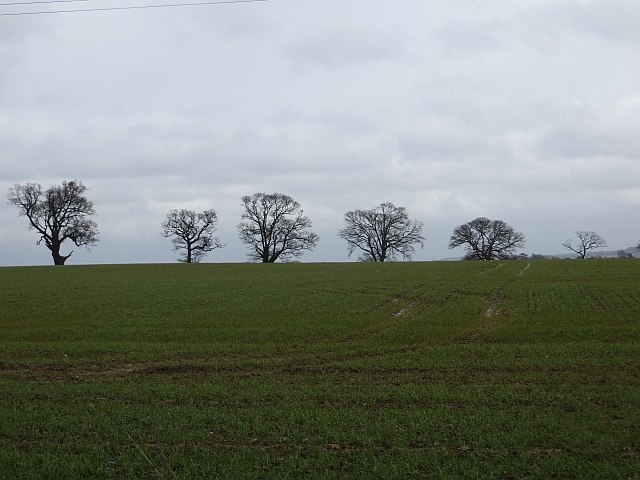Belgian farmers sowed more grain last year due to higher prices because of the Ukraine war. The acreage of spring cereals and grain corn increased by 36 percent in 2022, according to final figures from the Belgian statistics office Statbel.
Specifically, the area of spring wheat, spring barley and grain maize grew by 19,251 hectares compared to 2021, reports Belgian news site Vilt.be. Furthermore, Statbel figures show that the number of farms in Belgium fell again in 2022.
Belgium’s area of open field vegetable cultivation dropped 4.5 percent last year. There were 10.2 percent fewer strawberries grown outdoors, but the area of strawberries grown in greenhouses actually increased (+9.2 percent).
More fruit in Wallonia
The area of large fruit in Belgium plumped 1.8 percent in 2022. This was mainly due to the increase in acreage in Wallonia (+18 percent). In Flanders, there was a slight shift from apples (-1.5 percent) to pears (+0.2 percent).
The acreage of small fruits also took off. The 11.2 percent increase was mainly due to the 20.7 percent increase in vineyard area. This increase was greater in Wallonia (+25.8 percent) than in Flanders (+15 percent). With this, the total area of small fruit recorded was 673 hectares.
Fewer cattle and pigs
In addition, Statbel data shows that Belgium’s cattle herd continued to decline by 1.1 percent to 2.29 million heads in October, 2022 compared to October 2021. The decline was greater in Wallonia, at minus 1.4 percent, than in Flanders (-0.8 percent). The dairy herd in Belgium increased due to good milk prices in 2022: a plus of 1.2 percent. 64.7 percent of dairy cows were kept in Flanders, 35.3 percent in Wallonia.
Vilt.be calls the 4.8 percent drop in the pig population in one year “striking.” Specifically, it means a decrease of 290,973 animals. The total number of fattening pigs heavier than 50 kilograms dropped by 5.4 percent. This may be a result of high feed prices.
The number of breeding pigs decreased by 5.6 percent between October 2021 and October 2022. According to Statbel, the decline was greatest among other non-covered sows (-11.2 percent). The Belgian statistics office assumes that this trend will continue.
Poultry population grows
The Belgian poultry population increased slightly by 0.3 percent in 2022. However, the number of laying hens for consumption eggs decreased by 3.7 percent due to bird flu and high feed costs and energy prices. In contrast, the number of laying hens for hatching eggs and hens that have not yet laid an egg did increase by 3.7 and 6.1 percent, respectively. This, according to Statbel, indicates that the poultry flock is going up. High meat prices in October pushed the number of broiler chickens by plus 0.2 percent.
Small fruit acreage also took off. The 11.2 percent increase was mainly due to the 20.7 percent expansion in vineyard area. This increase was greater in Wallonia (+25.8 percent) than in Flanders (+15 percent). With this, the total area of small fruit recorded 673 hectares.
Fewer cattle and pigs
In addition, Statbel data show that Belgium’s cattle herd continued to decline by 1.1 percent to 2.29 million head in October 2022 compared to October 2021. The decline was greater in Wallonia with a minus of 1.4 percent than in Flanders (-0.8 percent). The dairy herd in Belgium increased due to good milk prices in 2022: a plus of 1.2 percent. 64.7 percent of dairy cows were kept in Flanders, 35.3 percent in Wallonia.
Vilt.be calls the 4.8 percent drop in the pig population in one year striking. Specifically, it means a decrease of 290,973 animals. The total number of fattening pigs heavier than 50 kilograms dropped by 5.4 percent. This may be a result of high feed prices.
The number of breeding pigs decreased by 5.6 percent between October 2021 and October 2022. According to Statbel, the decline was greatest among other non-covered sows (-11.2 percent). The Belgian statistics office assumes that this trend will continue.
Poultry population grows
The Belgian poultry population increased slightly by 0.3 percent in 2022. However, the number of laying hens for consumption eggs decreased by 3.7 percent due to bird flu and high feed costs and energy prices. In contrast, the number of laying hens for hatching eggs and hens that have not yet laid an egg did increase by 3.7 and 6.1 percent, respectively. This, according to Statbel, indicates that the poultry flock is going up. High meat prices in October pushed the number of broiler chickens by plus 0.2 percent.
The number of Belgian farms declined in 2022. With 35,192 farms, there were 2.3 percent fewer than the previous year. The decline was greatest in Flanders at -3.3 percent. The decline was accompanied by a slight decrease of 0.5 percent in the area of agricultural land.
Source: Nieuweoogst.nl
